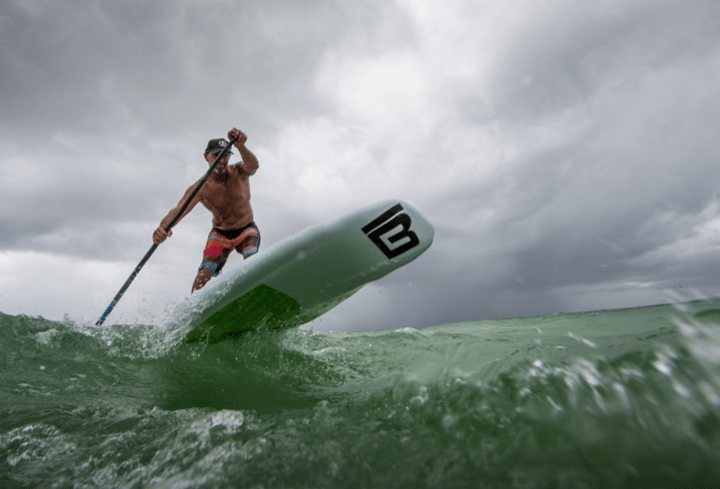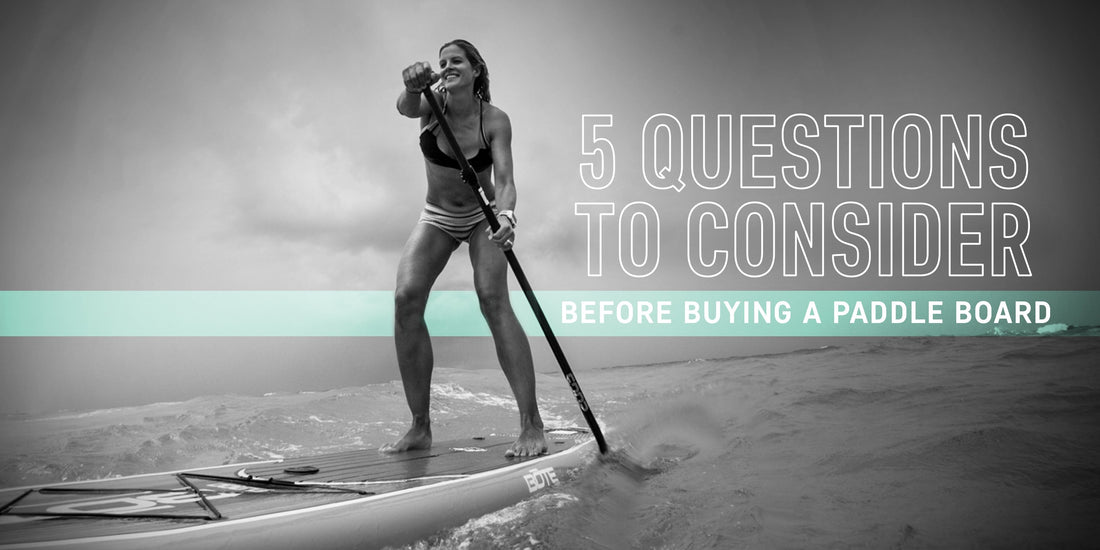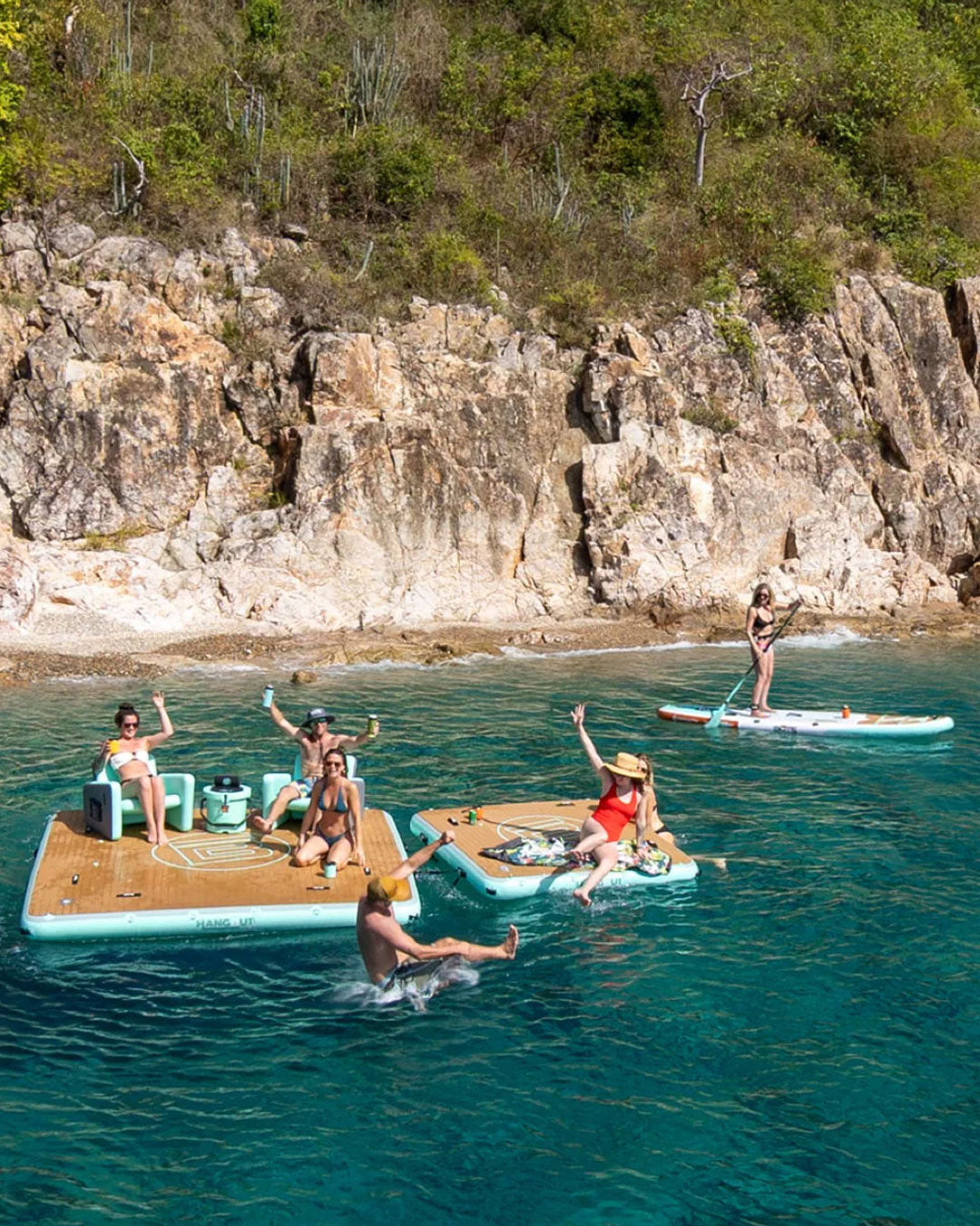Five Questions to Consider Before Buying a Paddle Board
Paddle boards have come a long way since the sport began. From their origins as clunky, oversized surfboards, the modern paddle board has become an elegantly engineered personal watercraft. From fishing to overnight expeditions, today’s SUPs are capable of things that many never dreamed of.
With such a wide variety of options, how do you know which board is right for you? Below are five questions to consider when shopping for a SUP.
Still confused? Give BOTE a call, reach out on social media, or just send us an email. BOTE’s experts are available by phone or chat to answer any questions you may have and to make it as easy as possible for you to join #BOTENATION and hit the water!
From their origins as clunky, oversized surfboards, the modern paddle board has become an elegantly engineered personal watercraft
1. WHAT IS YOUR STATURE?
A 6’2” male potentially will require a different paddle board than a 5’2” female. Generally speaking a taller, larger individual will feel more stable on a longer, wider board. Smaller paddlers will move faster in the water and enjoy more maneuverability with a smaller sized board – not to mention an easier time transporting it to the water. A solid paddle board can range from 8' to over 16'+ and weigh 26-70 pounds depending on the brand and type of materials used. BOTE 's rigid paddle boards range form 10'6-14' and range in weight from 35-55 pounds. Generally speaking, the bigger you are (in height or weight) the wider and longer you'll want the board to be for maximum stability. Shorter boards are more maneuverable and generally a better option for those of smaller stature. Below is BOTE’s paddle board line-up from smallest to largest capacity. AERO inflatable boards can have a higher capacity while being lighter weight. If weight is of primary concern, the Breeze Aero is our lightest paddle board thanks to AeroUltra technology.

← Scroll To View Entire Chart →
Compare |
Board Length |
Board Capacity |
Board Weight |
|---|---|---|---|
Kids Flow Aero |
8' | 100 lbs. | 14 lbs. |
Flood |
10'6" | 230 lbs. | 35 lbs. |
HD |
10'6" | 240 lbs. | 38 lbs. |
Breeze Aero |
10'8" | 250 lbs. | 20 lbs. |
Flood Aero |
11' | 275 lbs. | 28 lbs. |
Traveller Aero |
12'6" | 275 lbs. | 30 lbs. |
Traveller |
12'6" | 275 lbs. | 34 lbs. |
Flood |
12' | 300 lbs. | 38 lbs. |
HD AERO |
11'6" | 315 lbs. | 30 lbs. |
Traveller |
14' | 315 lbs. | 42 lbs. |
HD |
12' | 315 lbs. | 45 lbs. |
Rackham |
12' | 350 lbs. | 48 lbs. |
Rackham Aero |
12'4" | 400 lbs. | 52 lbs. |
Rackham |
14' | 400 lbs. | 52 lbs. |
Rover Aero |
12'6" | 500 lbs. | 63 lbs. |
Rover |
14' | 500 lbs. | 105 lbs. |
NOTE:
The closer you get to a board’s recommended weight capacity, the less stable the paddle board will feel. For optimal performance, it’s recommended to go with the next available size if the total weight on the board is within 50 pounds of the maximum capacity. When calculating total weight, consider other riders (like a child or dog) as well as gear. Overnight expeditions can add 50 to 70 pounds of gear depending on the trip. Activities such as spearfishing can add 50 pounds. For traditional fishing, count on 5-10 pounds for gear.


Remember that driving to the launch spot is only half the battle – you still have to get your board to the water.
2. HOW WILL YOU TRANSPORT IT?
Getting your paddle board to the water is a key determining factor between buying an inflatable or solid paddle board. If you live near the water or have the means to transport a solid board, BOTE Gatorshell boards offer slightly enhanced performance in speed and the option for a displacement hull, which improves tracking. While Gatorshell Boards are fantastic, many people opt for an inflatable paddle board because with the improvements in Aero Technology, an inflatable paddle board performs on the water very similarly to a rigid paddle board without the space constraints. The added convenience in transportation and storage without giving up significant on the water performance, is why Inflatable Sups have become so popular. An inflatable paddle board is ideal for people with smaller cars and/or homes. For those who want to do remote paddle board trips by plane, inflatables are the only way to go.
Remember that driving to the launch spot is only half the battle – you still have to get your board to the water. No matter which type of paddle board you select, the BOTE Travelink™ sling is a critical piece of equipment, particularly for long boardwalks or remote hike-in launches. Not only will it keep your hands free for other gear, it allows for a more ergonomic way to carry a paddle board.
getting to the water


A solid board is best off the ground, either on a rack or hanging from a BOTE Travelink™ sling or board bag.
3. HOW WILL YOU STORE IT?
A paddle board must be stored out of the elements to protect it from fading as well as structural damage. If you don’t have a garage or storage shed, an inflatable is truly best. Once rolled up in its bag, it easily fits inside a closet or under a bed, allowing you to store your paddle board in ideal, climate-controlled conditions. It's possible to store a solid paddle board outside but it must be protected from direct sun, moisture and extreme heat – such as under a deck or carport. A board bag will offer extra protection. You will also want to lock it up if stored outside so your BOTE Board doesn't "walk away".
A garage or storage shed can accommodate either an inflatable or solid paddle board. A solid board is best off the ground, either on a rack or hanging from a BOTE Travelink™ sling or board bag. If you want to store your inflatable paddle board inflated, always let out enough air until it’s compressible by hand, to protect against over inflation from fluctuating higher temperatures.
Learn more about how to care for inflatable and solid paddleboards.
Best ways to store a board

4. WHAT TYPE OF WATER WILL YOU PADDLE IN?
While there is a lot of crossover, certain aspects of a paddle board make it better suited for different types of water. For example, the displacement hull of a BOTE Traveller, HD or Rackham tracks smoothly through both wind chop and still waters in lakes, bays and rivers.. If you want to paddle board surf, a planing hull, as found on the BOTE Flood, offers more maneuverability. While every BOTE board performs in the open ocean, the BOTE Rackham and BOTE Rover stand out for their thick rails and drop deck cockpits, which offer a lower center of gravity for more stability, especially in rougher conditions.


While every BOTE board performs in the open ocean, the BOTE Rackham and BOTE Rover stand out for their thick rails and drop deck cockpits, which offer a lower center of gravity for more stability, especially in rougher conditions.
5. HOW DO YOU PLAN TO USE IT?
There is a lot of overlap in utility between different paddle board styles. It’s easiest to break it down into categories.
For a solid paddle board…
The BOTE HD and BOTE Flood are the original BOTE Boards. While built for leisure paddling, they still offer ample stability and performance for more specialized applications. Based on their different hull designs, the BOTE Flood offers better maneuverability and is perfect for paddle board surfing. The BOTE HD is the more versatile option and a favorite for things like paddle board fishing. The BOTE Traveller excels at long distance paddling, whether it be for fitness or loaded down with gear for an expedition. BOTE Rackham is known as the SUV of paddleboards because of its unmatched stability, and its higher weight capacity makes it ideal for everything from paddling with the family to all day fishing trips. The BOTE Rover is truly in a category of its own as a motorized micro skiff. It’s great for going further faster. Although it is only 105 pounds, transporting the rover will require a larger vehicle or a small trailer due the combination of length and weight.
For an inflatable paddle board…
Differences in performance are a little less noticeable since all AERO inflatables have the same hull type. When it comes to choosing the ideal inflatable, it really comes down to weight capacity, stability and board shape. The BOTE Traveller for example, offers a narrow nose and sleek profile for moving smoothly through the water. The BOTE Rackham Aero and BOTE Rover Aero offer the highest capacity, best stability, and the most features for accessorizing the next fishing or paddling trip.
While each paddle board has multiple applications, they each have their “sweet spots” in terms of performance and end use.

Traveller
Fitness, Long Distance Paddling, Expedition
SHOP NOW
HOW TO VEHICLE MOUNT YOUR PADDLE BOARD
Cars WITHOUT a roof rack can utilize systems such as the Quick Strap Board Rack. However, it’s not suggested for highway travel or speeds over 55 mph.
Cars and SUVs with Roof Racks can use Roof Rack Pads and cam straps (never use ratchet straps, as they can damage the paddle board’s shell). If your roof rack does not have cross bars you’ll want to get them from a rack system manufacture like Thule. Most of the rack systems have easy to use configurators so you can match your vehicle model to the right kit.
A truck can safely transport solid or inflatable paddleboards with a tailgate pad. Either way, a board bag or board sox is highly recommended to protect your solid paddle board from dings or UV damage while in transit.
An inflatable paddle board can be thrown into the trunk or backseat of any car. Of course, it will need to be inflated when you get to your destination. The electric AeroPump will save you time and energy by inflating your paddle board to the desired PSI then automatically shutting off. Some people prefer to keep their inflatable paddle board filled with air so it’s always paddle ready. An inflatable can be vehicle mounted like a solid paddle board, but you need to let out enough air to allow for natural heat expansion (deflate until you can compress it with your hand).












